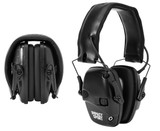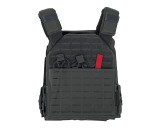How is Bulletproof Clothing Made? A Comprehensive Guide
Introduction
Bulletproof clothing has evolved significantly, providing protection to military personnel, law enforcement officers, and civilians. This detailed guide explores the manufacturing process of bulletproof clothing, different types available, and the nuances of selecting the right type for specific needs.
What is Bulletproof Clothing?
Bulletproof clothing, also known as ballistic or bullet-resistant clothing, is designed to absorb and reduce the impact of bullets and shrapnel. It combines protective materials with everyday wearability, offering both safety and comfort.
The Manufacturing Process
The creation of bulletproof clothing involves several key steps:
- Material Selection: The core materials include Kevlar, Dyneema, and other high-strength fibers.
- Fabric Weaving: High-strength fibers are woven into a fabric that can disperse the energy of a bullet.
- Layering: Multiple layers of ballistic fabric are stacked to enhance protection.
- Cutting and Shaping: The layered fabric is cut and shaped to fit into various clothing items.
- Sewing and Integration: The ballistic panels are sewn into garments, ensuring they are securely fixed and comfortable to wear.
- Quality Testing: Finished products undergo rigorous testing to meet safety standards.
Key Steps in Manufacturing Bulletproof Clothing
| Step | Description |
| Material Selection | Choosing high-strength fibers like Kevlar and Dyneema |
| Fabric Weaving | Weaving fibers into fabric for energy dispersion |
| Layering | Stacking multiple fabric layers to enhance protection |
| Cutting and Shaping | Cutting fabric to fit clothing designs |
| Sewing and Integration | Sewing ballistic panels into garments |
| Quality Testing | Testing products to meet safety standards |
Types of Bulletproof Clothing
Bulletproof clothing comes in various forms, each designed for different levels of protection and specific applications.
- Bulletproof Vests: Standard protection, worn over or under clothing.
- Bulletproof Jackets: Offers more coverage, suitable for colder climates.
- Bulletproof Shirts: Discreet protection, often worn under regular clothing.
- Bulletproof Pants: Protection for the lower body, typically used in high-risk environments.
- Bulletproof Suits: High-end protection, often used by VIPs and executives.
Types of Bulletproof Clothing
| Type | Description | Common Uses |
| Bulletproof Vests | Standard protection, over/under clothing | Law enforcement, security personnel |
| Bulletproof Jackets | Additional coverage, suitable for cold climates | Outdoor activities, tactical operations |
| Bulletproof Shirts | Discreet, worn under regular clothing | Concealed carry, personal protection |
| Bulletproof Pants | Protection for lower body | High-risk environments, military operations |
| Bulletproof Suits | High-end, full-body protection | VIPs, executives |
Materials Used in Bulletproof Clothing
The effectiveness of bulletproof clothing depends on the materials used. The most common materials include:
- Kevlar: Lightweight, strong synthetic fiber known for its durability.
- Dyneema: Ultra-high molecular weight polyethylene, lighter and stronger than Kevlar.
- Spectra: Another type of polyethylene fiber, known for its high strength-to-weight ratio.
- Twaron: Similar to Kevlar, offering high tensile strength and heat resistance.
- Gold Flex: Combines different materials for flexibility and protection.
Common Materials in Bulletproof Clothing
| Material | Description | Key Features |
| Kevlar | Lightweight, strong synthetic fiber | Durability, flexibility |
| Dyneema | Ultra-high molecular weight polyethylene | Lighter, stronger than Kevlar |
| Spectra | High strength-to-weight ratio polyethylene fiber | High tensile strength, lightweight |
| Twaron | High tensile strength, heat-resistant synthetic fiber | Durability, heat resistance |
| Gold Flex | Composite of various materials | Flexibility, high protection |
Choosing the Right Bulletproof Clothing
When selecting bulletproof clothing, consider the following factors:
- Level of Protection: Different levels (NIJ IIA, II, IIIA, III, IV) indicate varying degrees of ballistic protection.
- Comfort and Fit: The clothing should be comfortable for extended wear and fit well to ensure maximum protection.
- Weight: Lighter clothing is preferable for mobility but may offer less protection.
- Concealability: Depending on the need, choose between overt or covert designs.
- Durability: Ensure the clothing can withstand environmental conditions and wear and tear.
Factors to Consider When Choosing Bulletproof Clothing
| Factor | Description | Importance |
| Level of Protection | Different levels (NIJ IIA, II, IIIA, III, IV) | Ensures appropriate ballistic resistance |
| Comfort and Fit | Comfortable for extended wear, proper fit | Enhances wearability and protection |
| Weight | Lighter clothing for mobility | Balances mobility and protection |
| Concealability | Overt vs. covert designs | Depends on need for discretion |
| Durability | Ability to withstand environmental conditions and wear | Long-term usability |
Applications of Bulletproof Clothing
Different types of bulletproof clothing are suited to various conditions and situations:
- Law Enforcement: Vests and shirts for regular patrols, jackets for tactical operations.
- Military: Full-body suits and pants for combat situations, vests for patrols.
- Personal Protection: Discreet shirts and jackets for civilians and VIPs.
- Security Personnel: Vests and jackets for daily operations, suits for executive protection.
- Outdoor Activities: Jackets and pants for hunters and adventurers in high-risk areas.
Applications of Bulletproof Clothing
| Application | Suitable Clothing Types | Situations |
| Law Enforcement | Vests, shirts, jackets | Patrols, tactical operations |
| Military | Full-body suits, vests, pants | Combat situations, patrols |
| Personal Protection | Discreet shirts, jackets | Civilian use, VIP protection |
| Security Personnel | Vests, jackets, suits | Daily operations, executive protection |
| Outdoor Activities | Jackets, pants | Hunting, adventuring in high-risk areas |
Conclusion
Understanding how bulletproof clothing is made and the different types available can help you make an informed decision when selecting the right protection. By considering factors such as the level of protection, comfort, weight, concealability, and durability, you can choose the most suitable clothing for your specific needs. Whether for military, law enforcement, personal protection, or outdoor activities, the right bulletproof clothing provides crucial protection and peace of mind.
Recent Posts
-
Understanding Ballistic Shield Ratings and Their Applications
The Trusted Name in Tactical Defense - BattleSteel® When it comes to protecting those who protect us …2025-04-19 -
The Importance of Hearing Protection in Tactical Environments
The Legacy of BattleSteel® BattleSteel® is a trusted name in the world of tactical defense equipment …2025-04-14 -
How to Properly Fit and Wear a Plate Carrier
About BattleSteel and Their Mission BattleSteel is a trusted name in the tactical gear industry, ren …2025-04-11



